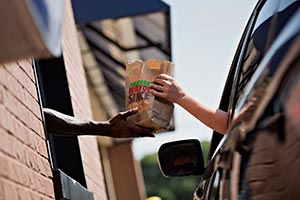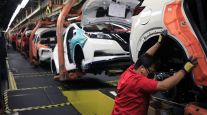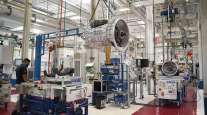Service Industries Expand at Slowest Pace in Six Months

Service industries expanded in December at the slowest pace in six months, indicating the biggest part of the U.S. economy cooled as the year drew to a close.
The Institute for Supply Management’s non-manufacturing index fell to 56.2 from a November reading of 59.3 that was the second-strongest since 2005, the Tempe, Arizona-based group’s report showed Jan. 6. The average for all of 2014 was the highest in nine years. The median forecast of 75 economists surveyed by Bloomberg News called for a December figure of 58.
Gains in consumer spending will probably underpin the service industries that make up almost 90 percent of the economy as global markets struggle to gain momentum. Increased hiring and the cheapest gasoline since 2009 are helping spur sales from auto dealers to apparel retailers.
“Any slowdown in services is likely to be proven temporary,” David Sloan, a senior economist at 4Cast Inc. in New York, said before the report. “We could see a reacceleration in the new year, given gasoline prices continue to fall and the labor market is improving.”
The group’s non-manufacturing survey covers an array of industries including utilities, retailing, and health care, as well as construction and agriculture.
A slowdown to a more sustainable pace of growth was also reflected in the group’s factory survey released last week. The ISM manufacturing index also fell in December to a six-month low as businesses adjusted to weaker overseas markets and some companies delayed orders in anticipation oil prices would fall further.
Readings greater than 50 signal expansion. Bloomberg survey estimates for the ISM services index ranged from 56 to 59.8.
The report showed the new orders measure declined to 58.9 last month, the lowest since April, from 61.4. The business activity index decreased to 57.2, the weakest since March, from the prior month’s 64.4. The measure parallels the ISM’s factory production gauge.
Cheaper fuel helped drive down the group’s index of prices paid at service providers to 49.5, the first time since September 2009 that more companies reported costs were falling than rising.
The ISM’s employment gauge fell to 56 from 56.7 the prior month.
The U.S. expansion, well into its sixth year, is being powered by growth in household purchases. Consumer spending, which accounts for almost 70% of the economy, grew at a 3.2% pace in the third quarter, according to Commerce Department data. That helped the economy expand at a 5% annualized pace, the fastest since the three months ended in September 2003.
More hiring and cheaper gasoline will probably help sustain Americans’ purchases. Monthly payroll gains averaged almost 241,000 from January through November, up from the prior year’s 194,000. The 2.7 million workers added to payrolls are the most since 1999.
A report later this week may show the economy added 240,000 jobs in December after 321,000 a month earlier.
Lower fuel costs are giving Americans extra cash to spend on other goods and services, one reason retailers were able to draw more holiday shoppers during the November-December period.
Carmakers and auto dealerships are also benefiting. General Motors Co., Ford Motor Co. and other major automakers reported rising vehicles sales in the U.S. in December, capping the best year since 2006.
“As we look into 2015, economic indicators remain robust and the fundamentals are poised for a continuation of the momentum we saw in the latter part of 2014,” Emily Kolinski Morris, Ford’s chief economist, told analysts and reporters on a conference call yesterday.
Builders are seeing a mixed picture for the housing market as strict bank lending standards and rising property prices weigh on home sales. At the same time, improving job prospects are slowly bringing ownership within reach of more Americans.
Douglas Yearley, chief executive officer of Toll Brothers Inc., said on a Dec. 10 earnings call that while there are “some signs of pretty significant improvement since the end of the summer,” buyers remain “skittish” and the recovery is going to be “a bit bumpy.”



